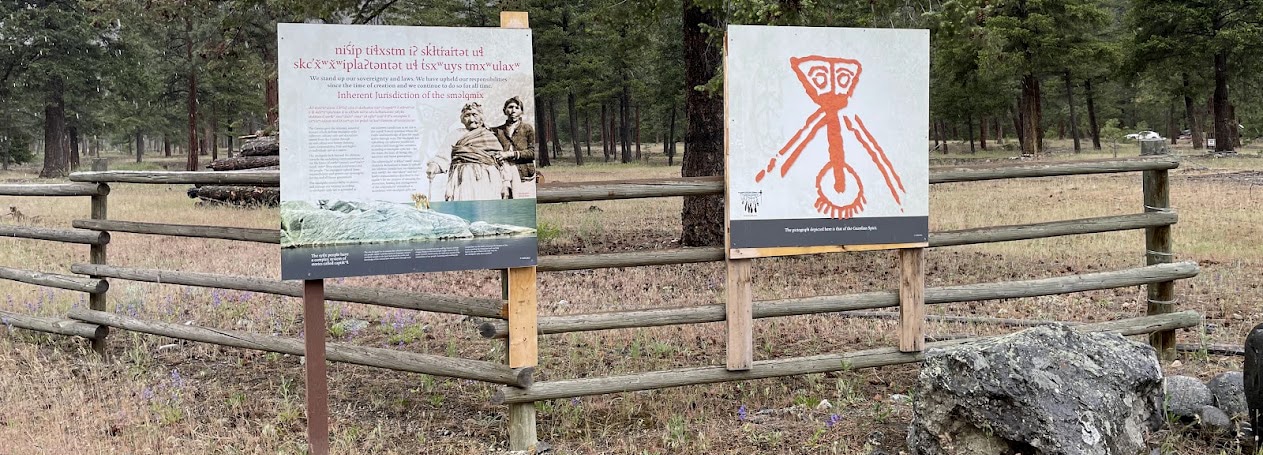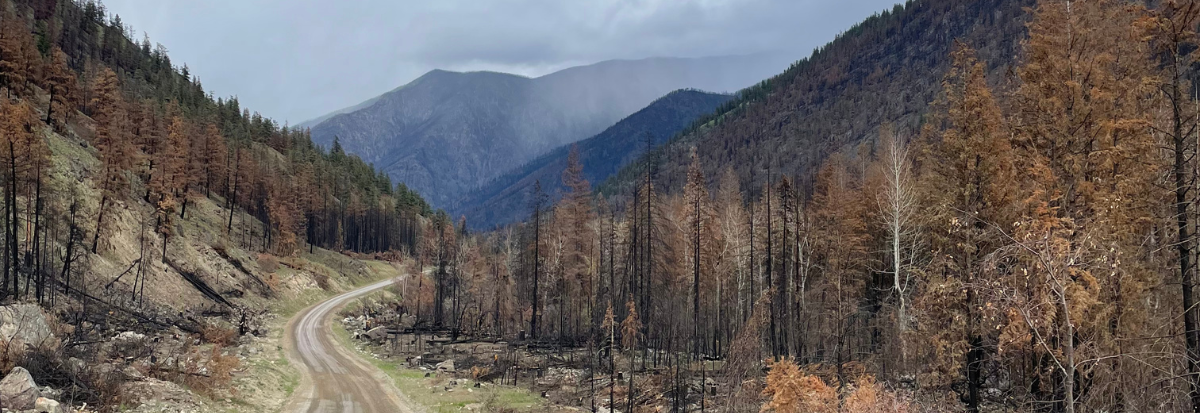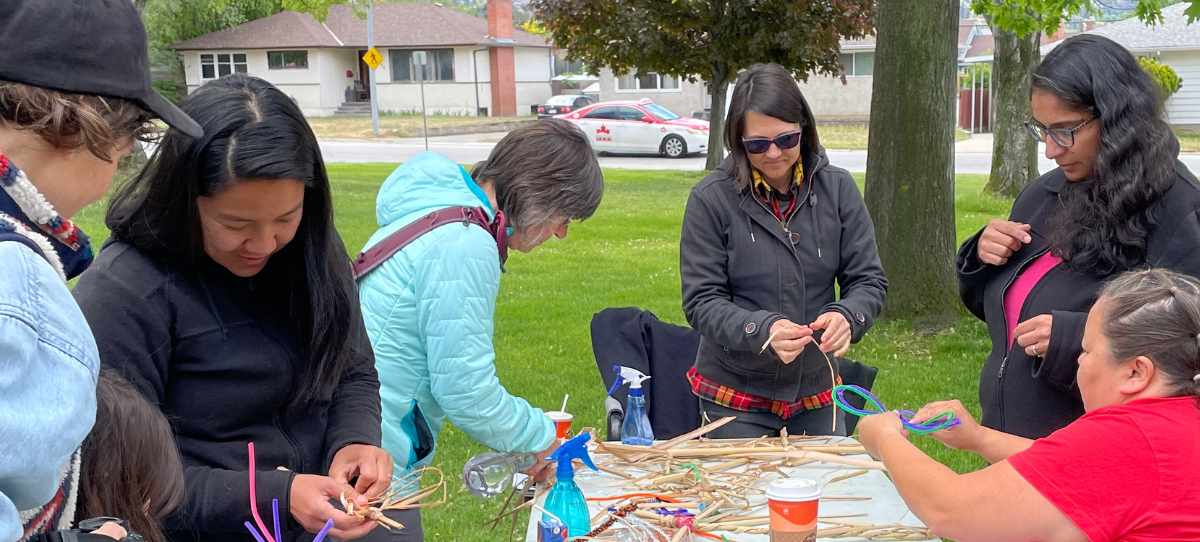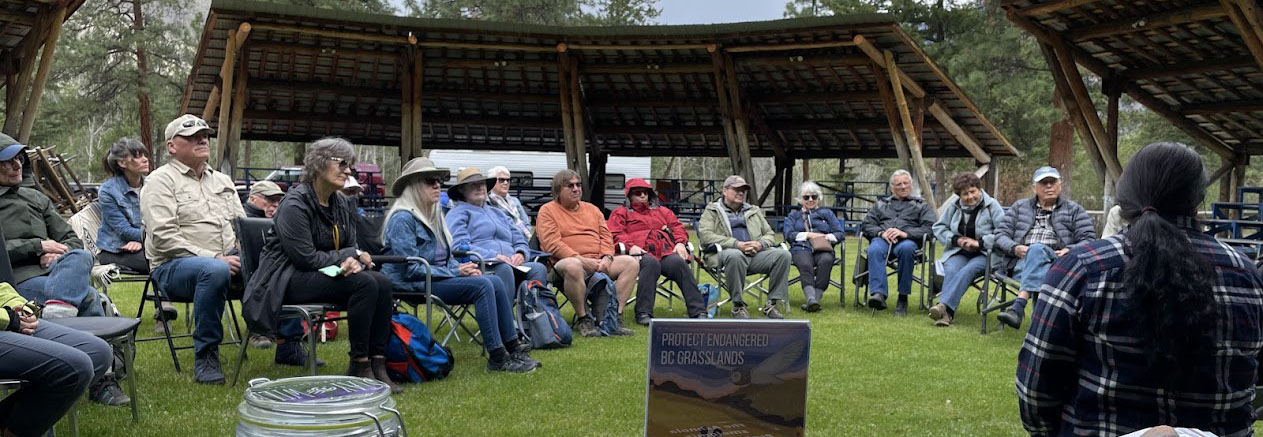Over the May long weekend, our Land and Freshwater team travelled to the nxʷəlxʷəltantət (South Okanagan-Similkameen) to participate in the Meadowlark Nature Festival. CPAWS-BC has worked with partners in the region over the past two decades to expand protection for the increasingly endangered grasslands, with our work focusing particularly on the proposed South Okanagan-Similkameen National Park Reserve and more recently the nʔaysnúlaʔxʷ (Ashnola) sPA (sməlqmíx Protected Area).
Grasslands in BC have more species at risk than any other ecosystem in the province. They cover just 1% of the province, but are home to 30% of at-risk species in BC, such as the burrowing owl and bighorn sheep, making them one of the most important conservation priorities in BC.
It was amazing to visit protected areas, connect with supporters, talk about the urgent conservation needs of endangered grasslands, and see people participating in a fantastic art session with Ullus Collective Indigenous artists.

Where the Four Sacred Ecosystems Connect
A journey to protect the Ashnola River Corridor
On Saturday morning we travelled from our base in Penticton, 60 kilometres southwest to the nʔaysnúlaʔxʷ (Ashnola) sPA (sməlqmíx Protected Area) just outside of Keremeos.
Rob Edwards, Lauren Terbasket and Rheana Marchand from the Lower Similkameen Indian Band (LSIB) shared with us and Meadowlark festival participants, their journey to protect the Ashnola River Corridor (or watershed), home to one of the most endangered rivers in the province.
After living through the gradual but profound degradation of some of their lands and water from mining discharge, unsustainable forestry, hunting and other exploitative activities, the sməlqmíx people re-asserted their sovereignty and obligation to protect and conserve the waters and lands, through cultural revitalization and traditional knowledge, throughout the Similkameen watershed. In 2022, the Lower Similkameen declared the entirety of the Ashnola Watershed an Indigenous Protected and Conserved Area (IPCA).
In the summer of 2023, the largest forest fire in the valley since the 1800s, affected 40,000 hectares in the Ashnola sPA. The small team at the LSIB, having declared the IPCA only a year earlier, were already busy implementing conservation and management plans. Now they are also undertaking restoration work to manage the aftermath of the fires and replant millions of tree and shrub seedlings to stabilize and ensure safety around the steep slopes of popular recreation areas.
As we walked around the Ashnola campground and sməlqmíx Protected Area, we learned about the unique grassland shrubs like snowbrush and bitterroot and were able to smell the rain on the parched earth. We were filled with a deep sense of gratitude for their dedication and determination to keep pushing forward to protect and steward these breathtaking lands.

Coexisting with fire
Learning from a wildfire expert
On Saturday evening, back in Penticton at the Okanagan College, we joined Tour 35 – Learning to Coexist with Wildfire in BC led by eminent scholar and UBC Professor of Forest & Conservation Science Lori Daniels.
As the province grapples with the aftermath of the 2023 wildfires, such as the one that went through the Ashnola Valley as we had seen earlier that day, a shift to diversified, evidence-based, adaptive and proactive landscape management, based on science and community knowledge, is critically needed, according to Daniels.
Her presentation called for transformative changes to forest management and highlighted the importance of cultural connections to the land and reintroducing indigenous forest management practices. It echoed what we had heard earlier in the day. Daniels also noted that cultural and prescribed fire removes the build up of plant material and reduces the intensity of naturally occurring wildfires, while also promoting health and resiliency of the land.

Because we are beautiful – ałi kʷu swiwinumpta
Making art with grassland materials
On Sunday morning we gathered together in the gardens of Leir House for a session led by Victoria Jaenig of Ullus Collective Indigenous artists to learn the art of making dragonflies from traditional locally collected grasses and leaves (as well as some more contemporary materials).
This session provided another way for us to connect with the grasslands we had been learning about.
This event was also a great opportunity to engage in conversations with attendees about the work that CPAWS-BC and partners have been undertaking in the region and highlighted the important relationship between preserving cultural connections to the land and healthy ecosystems.
Ullus Collective has been creating a place to gather and cultivate the unique arts practices of sqilxw artists for over four decades and it was a privilege to be able to spend the morning together.
Our journey home on Highway 3, took us past a dusty white mountain peak, scarred by mining activity, not far from the Ashnola protected area. It underscored the importance of the ongoing work to protect the Ashnola watershed and the nearby proposed South Okanagan-Similkameen National Park Reserve.
Protect endangered BC grasslands
Let elected leaders know we need to protect endangered ecosystems before they’re gone.
